Li Chi-chun (1875–?), a Chinese general from the beginning of the Republic of China, leader of a Japanese puppet force in southeast Manchukuo from 1933 -1935.

The Republic of China (ROC) controlled the Chinese mainland between 1912 and 1949. It was established in January 1912 after the Xinhai Revolution, which overthrew the Qing dynasty, the last imperial dynasty of China. Its government moved to Taipei in December 1949 due to the Kuomintang's defeat in the Chinese Civil War. The Republic's first president, Sun Yat-sen, served only briefly before handing over the position to Yuan Shikai, leader of the Beiyang Army. His party, then led by Song Jiaoren, won the parliamentary election held in December 1912. Song Jiaoren was assassinated shortly after and the Beiyang Army led by Yuan Shikai maintained full control of the Beiyang government. Between late 1915 and early 1916, Yuan Shikai tried to reinstate the monarchy before abdicating due to popular unrest. After Yuan Shikai's death in 1916, members of cliques in the Beiyang Army claimed their autonomy and clashed with each other. During this period, the authority of the Beiyang government was weakened by a restoration of the Qing dynasty.

Manchukuo was a puppet state of the Empire of Japan in Northeast China and Inner Mongolia from 1932 until 1945. It was founded as a republic, but in 1934 it became a constitutional monarchy. It had limited international recognition and was under the de facto control of Japan.
Li Chi-chun, born in Hubei in 1875, became a general after serving in the Republican Army during the Xinhai Revolution. During the Warlord Era little is known of his activities. In early 1933, following the Japanese invasion of Manchuria and the establishment of Manchukuo Li appeared in southeast Liaoning province at the head of several thousand men calling themselves the "National Salvation Army", and flying the old five-barred flag of the Chinese Republic.

The Xinhai Revolution, also known as the Chinese Revolution or the Revolution of 1911, was a revolution that overthrew China's last imperial dynasty and established the Republic of China (ROC). The revolution was named Xinhai (Hsin-hai) because it occurred in 1911, the year of the Xinhai stem-branch in the sexagenary cycle of the Chinese calendar.

The Warlord Era was a period in the history of the Republic of China when control of the country was divided among former military cliques of the Beiyang Army and other regional factions, which were spread across the mainland regions of Sichuan, Shanxi, Qinghai, Ningxia, Guangdong, Guangxi, Gansu, Yunnan, and Xinjiang.
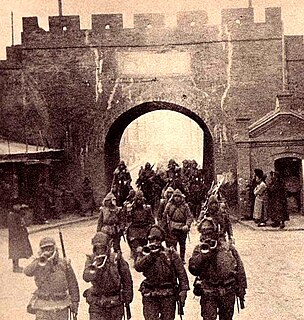
The Japanese invasion of Manchuria began on 18 September 1931, when the Kwantung Army of the Empire of Japan invaded Manchuria immediately following the Mukden Incident. After the war, the Japanese established the puppet state of Manchukuo. Their occupation lasted until the Soviet Union and Mongolia launched the Manchurian Strategic Offensive Operation in 1945.
At first, Li's force was fighting the Anti-Japanese guerrillas, despite their claim to be ready to fight the Japanese. They then served with the Manchukuoan forces in the Japanese Operation Nekka in 1933. After that they began to make trouble in the disputed area between Manchukuo and northern China with the intent to establish an "independent" government there with the help of the Japanese, and they captured some small towns. However, with the Tanggu Truce, and the establishment of the demilitarized zone, Li's army, now about 10,000 strong, was no longer wanted. The Japanese disbanded it, with only 2,000 of its men being recruited to serve in the demilitarized zone's Peace Preservation Corps.

The Tanggu Truce, sometimes called the Tangku Truce, was a cease-fire signed between Republic of China and Empire of Japan in Tanggu District, Tianjin on May 31, 1933, formally ending the Japanese invasion of Manchuria which had begun two years earlier.
General Li disappeared. Reports at the time believed him to have retired to the Japanese Concession in Tianjin.
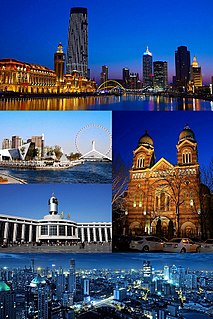
Tianjin, formerly romanized as Tientsin, is a coastal metropolis in northern China and one of the nine national central cities of the People's Republic of China (PRC), with a total population of 15,621,200 as of 2016 estimation. Its built-up area, made up of 12 central districts, was home to 12,491,300 inhabitants in 2016 and is also the world's 29th-largest agglomeration and 11th-most populous city proper.
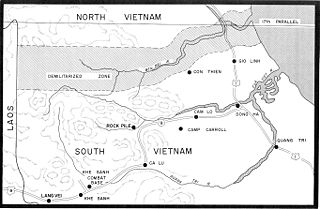
A demilitarized zone, DMZ or DZ is an area in which treaties or agreements between nations, military powers or contending groups forbid military installations, activities or personnel. A DMZ often lies along an established frontier or boundary between two or more military powers or alliances. A DMZ may sometimes form a de facto international border, such as the 38th parallel between North and South Korea. Other examples of demilitarized zones are a 120-mile (190 km) wide area between Iraq and Kuwait, Antarctica and outer space.
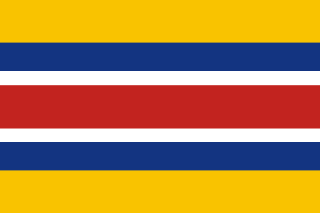
Mengjiang, also known in English as Mongol Border Land or the Mongol United Autonomous Government, was an autonomous area in Inner Mongolia, existing initially as a puppet state of the Empire of Japan before being under nominal Chinese sovereignty of the Reorganized National Government of the Republic of China from 1940. Formed in 1939, it consisted of the then-Chinese provinces of Chahar and Suiyuan, corresponding to the central part of modern Inner Mongolia. It has also been called Mongukuo or Mengguguo. The capital was Kalgan, from where it was ruled by the Mongol nobleman Prince Demchugdongrub. The territory returned to Chinese control after the defeat of the Japanese Empire in 1945.
The New Armies, more fully called the Newly Created Army, was the modernized army corps formed under the Qing dynasty in December 1895, following its defeat in the First Sino-Japanese War. It was envisioned as militia fully trained and equipped according to Western standards.
The Defense of the Great Wall was a campaign between the armies of Republic of China and Empire of Japan, which took place before the Second Sino-Japanese War officially commenced in 1937. It is known in Japanese as Operation Nekka and in many English sources as the First Battle of Hopei.
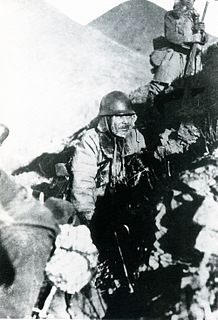
The Battle of Rehe was the second part of Operation Nekka, a campaign by which the Empire of Japan successfully captured the Inner Mongolian province of Rehe from the Chinese warlord Zhang Xueliang and annexed it to the new state of Manchukuo. The battle was fought from February 21 to March 1, 1933.

The Suiyuan Campaign was an attempt by the Inner Mongolian Army and Grand Han Righteous Army, two forces founded and supported by Imperial Japan, to take control of the Suiyuan province from the Republic of China. The attempted invasion occurred in 1936, shortly before the Second Sino-Japanese War. The Japanese government denied taking part in the operation, but the Inner Mongolians and the other collaborationist Chinese troops received air support from Japanese planes and were assisted by the Imperial Japanese Army. The entire operation was overseen by Japanese staff officers. The campaign was unsuccessful, mostly due to lack of training and low morale among the Mongolians and other collaborators. The defense of Suiyuan, one of the first major successes of China's National Revolutionary Army over Japanese-supported forces, greatly improved Chinese morale.

The Inner Mongolian Army, also sometimes called the Mengjiang National Army, referred to the Inner Mongolian military units in service of Imperial Japan and its puppet state of Mengjiang during the Second Sino-Japanese War, particularly those led by Prince Demchugdongrub. It was primarily a force of cavalry units, which mostly consisted of ethnic Mongols, with some Han Chinese infantry formations.

The Manchukuo Imperial Army was the ground force of the military of the Empire of Manchukuo, a puppet state established by Imperial Japan in Manchuria, a region of northeastern China. The force was primarily used for fighting against Communist and Nationalist guerrillas in Manchukuo but also took part in battle against the Soviet Red Army on several occasions. It initially consisted of former National Revolutionary Army troops of the "Young Marshal" Zhang Xueliang who were recruited after the Japanese invasion of Manchuria en masse, but eventually expanded to include new volunteers and conscripts. The Imperial Army increased in size from about 111,000 troops in 1933 to an estimated strength of between 170,000–220,000 soldiers at its peak in 1945, being composed of Han Chinese, Manchus, Mongols, Koreans, Japanese, and White Russians. Throughout its existence the majority of its troops were considered to be mostly unreliable by their Japanese officers and advisers, due to poor training, equipment, and morale.
The East Hopei Army was raised from the former soldiers of the Peace Preservation Corps that had been created by the Tangku Truce of 31 May 1933. The Demilitarized Zone Peace Preservation Corps had been the "neutral" force policing the Demilitarized area south of the Great Wall when Yin Ju-keng at the instigation of the Japanese proclaimed an Autonomous Government of Eastern Hopei in November 1935, with its capital at Tungchow.

The East Hebei Autonomous Government, also known as the East Ji Autonomous Government and the East Hebei Autonomous Anti-Communist Government, was a short-lived late-1930s state in northern China. It has been described by historians as either a Japanese puppet state or a buffer state.

The Pacification of Manchukuo was a Japanese anti-insurgency campaign during the Second Sino-Japanese War to suppress any armed resistance to the newly established puppet state of Manchukuo from various anti-Japanese volunteer armies in occupied Manchuria and later the Communist Northeast Anti-Japanese United Army. The operations were carried out by the Imperial Japanese Kwantung Army and the collaborationist forces of the Manchukuo government from March 1932 until 1942, and resulted in a Japanese victory.
After the Japanese invasion of Manchuria, and until 1933, large volunteer armies waged war against Japanese and Manchukuo forces over much of Northeast China.
Feng Zhanhai or Feng Chan-hai, 冯占海,(1899–1963), was one of the leaders of the volunteer armies resisting the Japanese and the puppet state of Manchukuo in Manchuria. Feng was born on November 6, 1899. At eighteen he joined the Dongbei Army, and later entered a military school graduating in 1921. After he graduated, he was successively a platoon leader, company commander, and battalion commander. At the time of the Mukden Incident and invasion of Manchuria he was a colonel commanding a regiment of the Kirin Guards Division.
Wang Delin or Wang Teh-ling (王德林) (1875-1938) was a bandit, soldier and leader of the National Salvation Army resisting the Japanese pacification of Manchukuo.
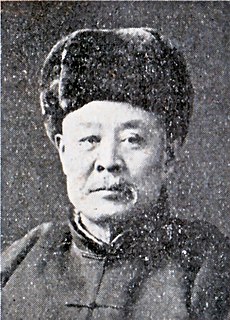
Zhang Haipeng (1867–1949), was a Chinese Northeastern Army general, who went over to the Japanese during the Invasion of Manchuria and became a general in the Manchukuo Imperial Army of the State of Manchuria.
The Inner Mongolian Campaign in the period from 1933 to 1936 were part of the ongoing invasion of northern China by the Empire of Japan prior to the official start of hostilities in the Second Sino-Japanese War. In 1931, the invasion of Manchuria secured the creation of the puppet state of Manchukuo and in 1933, Operation Nekka detached the province of Jehol from the Republic of China. Blocked from further advance south by the Tanggu Truce, the Imperial Japanese Army turned its attention west, towards the Inner Mongolian provinces of Chahar and Suiyuan, with the goal of establishing a northern China buffer state. In order to avoid overt violation of the Truce, the Japanese government used proxy armies in these campaigns while Chinese resistance was at first only provided by Anti-Japanese resistance movement forces in Chahar. The former included in the Inner Mongolian Army, the Manchukuo Imperial Army, and the Grand Han Righteous Army. Chinese government forces were overtly hostile to the anti-Japanese resistance and resisted Japanese aggression only in Suiyuan in 1936.
The Central Hubei Operation was one of the engagements between the National Revolutionary Army and Imperial Japanese Army during the Second Sino-Japanese War. Known as the Central Hubei Operation, East and West of Hsiang River, in Japan it is called the 漢水作戦. The battle lasted from 25 to 30 November 1940.

Aisin-Gioro Xiqia (Aisin-Gioro Hsi-hsia; Chinese: 愛新覺羅·熙洽; pinyin: Àixīnjuéluó Xīqià; Wade–Giles: Ai4-hsin1-chüeh2-lo2 Hsi1-ch'ia4; 1883–1950), commonly known monomymously as Xi Qia or Xi Xia (Hsi Hsia; Chinese: 熙洽; pinyin: Xīqià; Wade–Giles: Hsi1-hsia4; Hepburn: Ki Kō), was a general in command of the Kirin Provincial Army of the Republic of China, who defected to the Japanese during the Invasion of Manchuria in 1931, and who subsequently served as a cabinet minister in Manchukuo.
The Demilitarized Zone Peace Preservation Corps was a police force created by the Tanggu Truce to patrol and maintain order in the demilitarized zone extending from south of the Great Wall, to a line north east of the Bai River in Hebei province in northern China during the late 1930s.















